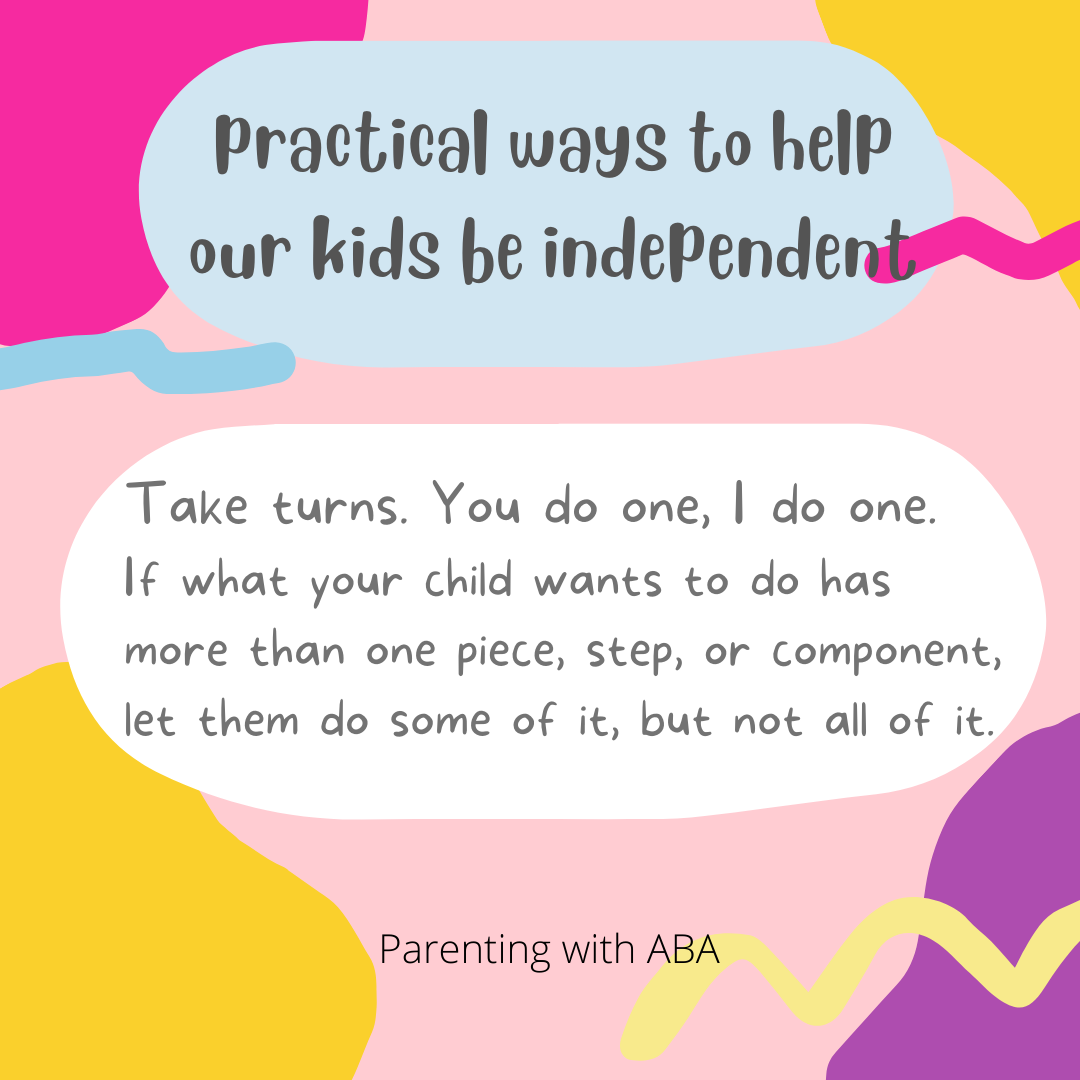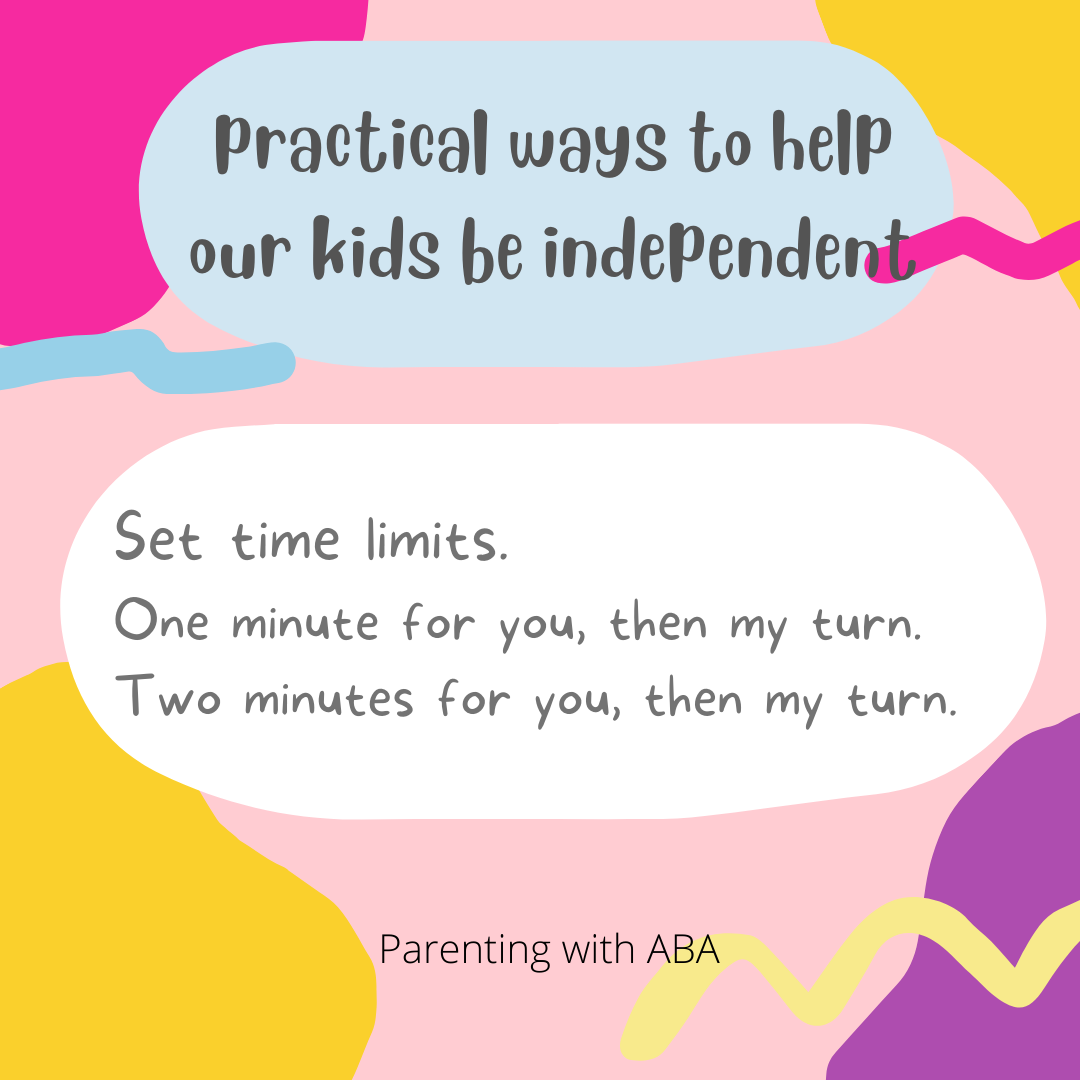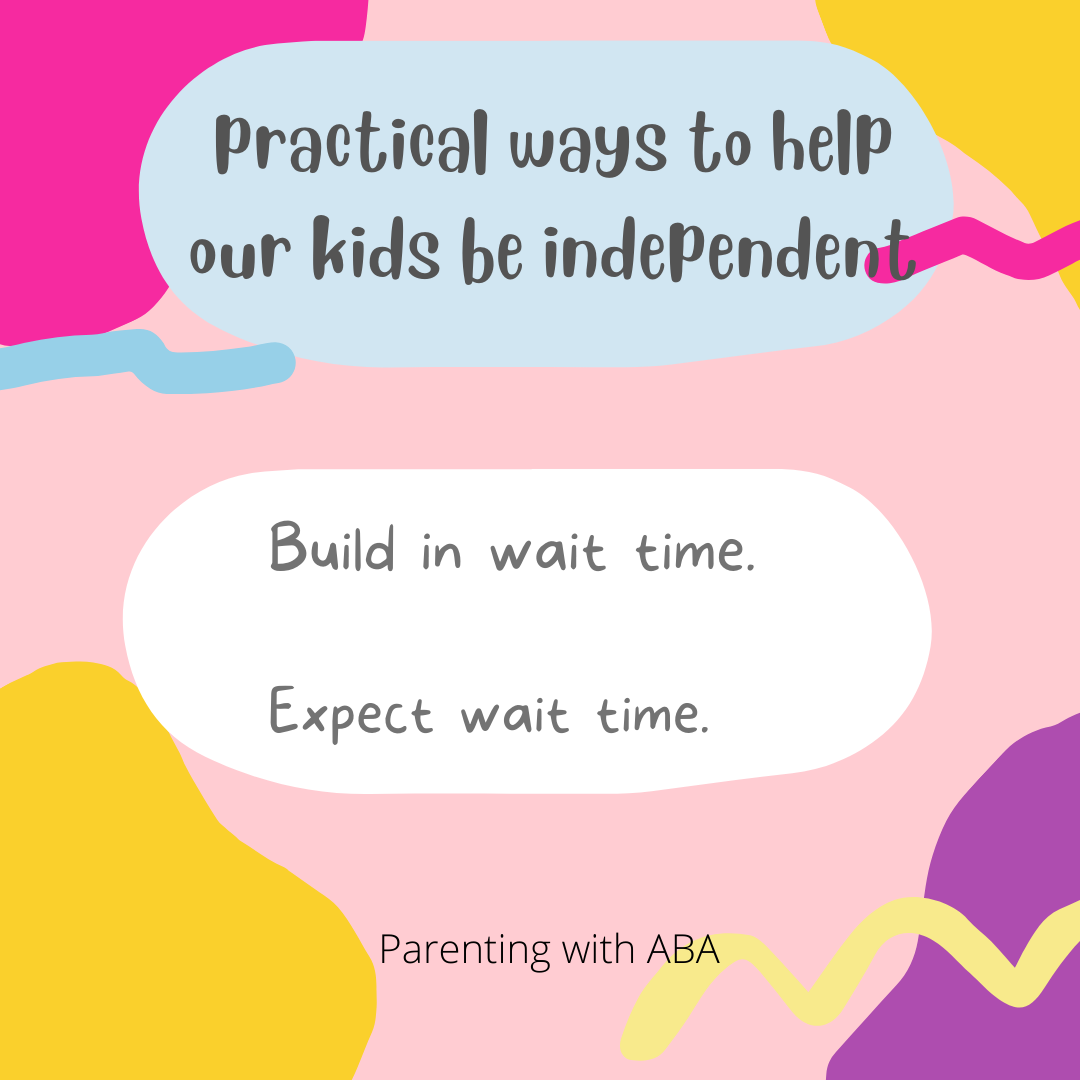I do it myself! Me do it! Myself!
We hear these things with toddlers or when our kids are learning that new flex- independence.
“Never do for a child what he can do for himself.” -Rudolf Dreikurs
But what if we don’t have 300 hours to wait for our kids to dress themselves, put their shoes on, pick up one crayon off the floor by themselves? We have things to do and people to see but these sweet kids of ours are slowing us down! How can we encourage independence in our little ones, but not spend all day waiting around for them?
Here are some practical ways to help our kids be independent, but within a boundary set by mom and dad.



- Take turns. You do one, I do one. If what your child wants to do has more than one piece, step, or component, let them do some of it, but not all of it. If they want to put their own socks on- you do one, I do one. If they want to carry multiple toys to the car- you carry one, I carry one.
- Set time limits. One minute for you, then my turn. Two minutes for you, then my turn. That gives them a little freedom without causing you to be late to school. Set a timer so you are honoring that actually promise of time you made and not using the old mom excuse of “they can’t tell time anyway”. Soon they will have more of a concept of time. Better to start that honesty and transparency with actually giving the amount of time you promised now.
- Build in wait time. If you need to leave the house at 8:00 and you normally start morning routines at 7:00, get up earlier. I know that’s an awful thing to say to a tired mom, but I’m going to say it again. Get up earlier. Get yourself ready earlier so you can be available to speed things along and help your child(ren) get out the door on time.
- Expect wait time. If you know it’s coming, why not mentally prepare for it? When you are feeling annoyed or stressed, pause and try to connect with the present moment. Take a deep breath and look at your child with wonder. Just a short while ago they couldn’t even do this skill they want to do on their own now! Isn’t that incredible? They are learning and growing so quickly. Take just a moment to notice that. Holy moly. This is so impressive. Look at your child with wonder and awe for just a moment.
5. Examine your own motives. Why are you so irritated that this is taking so long right now? What is it you need or want to be doing instead? Does that matter in the big picture? Zoom out. Will this thing you are all anxious about getting to or taken care of matter in 1 year? Will it matter in 5 years? Will it matter in 10 years? When your child is 10 years older than they are this moment, will this pressing matter have made an impact? Zoom out.
6. Make your help fun. Sometimes (dare I say often), moms feel like it’s not worth waiting for ever and ever to let their child do something on their own. Even after zooming out or connecting to the present moment, they still just want to get this show on the road and move on with their day. Jumping in to “help” by doing it for your child can sometimes be an aversive, or punishing, thing. So think about HOW you help. We want to avoid a power struggle, a meltdown, and we want our kids to want and actually like our help in the long run. So make your help more fun when they are little. Make it a race. Sing a song together. Make silly faces and use silly voices. Be dramatic and goofy. Make it fun. You are pairing your help with reinforcement to make it more fun and connect with your child instead of getting into a power struggle.
We want our kids to be more independent- but we’d prefer if they would flex those muscles at a more convenient time.
The next time you are feeling annoyed or frustrated that it is taking for-ev-er for your child to do something on their own, try one (or all) of these tools.

Recent Comments